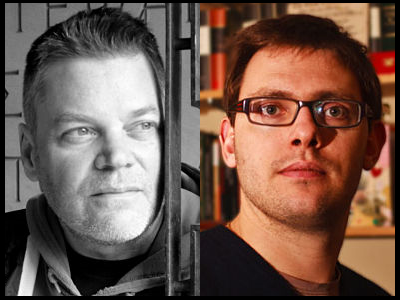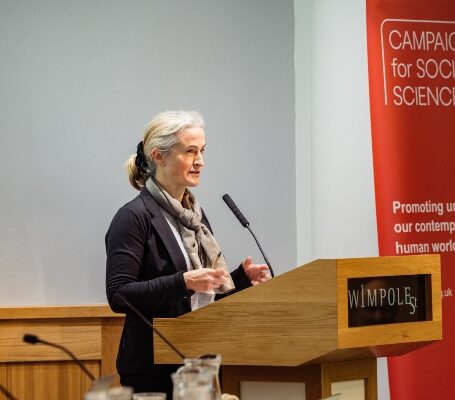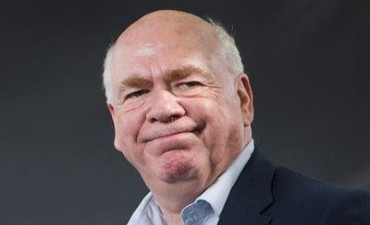Archived Webinar: Tom Chatfield and Mark Kingwell Discuss Critical Thinking

Mark Kingwell, left, and Tom Chatfield
Tom Chatfield, author of the new SAGE Publishing book Critical Thinking, and Mark Kingwell, the University of Toronto, held a lively conversation on the import of technology on how we think and act ‘critically.’ Chatfield, described as a ‘tech philosopher,’ and Kingwell, a more traditional professor of philosophy, traded perspectives, insights into the digital, and purportedly post-truth, era in this one-hour webinar. Not that, as Chatfield notes, that there’s anything new about critical thinking and inherent bias.
“Critical thinking, as a subject, has very old philosophical roots,” he tells the listeners. “We find ourselves talking, at root, about logic and about being reasonable.”
Both guests are prolific public intellectuals with a number of popular books to their credit. Chatfield, also a columnist for the BBC, has written six books exploring digital culture – most recently Live This Book!, How to Thrive in the Digital Age and Netymology. Critical Thinking, his first book for SAGE Publishing, is also his first clearly pedagogical text. Kingwell, meanwhile, is a contributing editor of Harper’s Magazine and author or co-author of 18 books of political, cultural, and aesthetic theory, his most recent being the linked essay collections Unruly Voices and Measure Yourself Against the Earth, and a book about games and philosophy, Fail Better: Why Baseball Matters from this year.
The webinar included a number of questions from the audience, and not all could be answered during the event. After the video below, some of those questions are addressed by the two philosophers.
Given the sensitivity surrounding controversial issues, how do you create a safe environment during classroom discussions?
Tom Chatfield: I guess an obvious practical point is to offer a good sense in advance of what will be covered, together with some brief sense of how and why this is being done, so that students can be as prepared as possible – and discreetly explore in advance any sensitivities or concerns. Then there is making the basic point that being able sensitively to discuss a range of views, far from constituting an endorsement of everything that is discussed, is necessary if any stance is to be rebutted in a rigorous way.
I suspect all this is both obvious and something that you already know – and I must confess that these controversies largely did not feature in my own university education — which is not to say that they should not have done, but rather that I do not feel I am in a particularly expert position to advise in depth on this very difficult front.
A safe environment strikes me as one in which all attendees feel able to speak up, but where this speech also remains mutually respectful – and where there is thus a strictly patrolled differentiation between the respect we owe to one another as individuals, and the fact that this very respect should be precisely what permits the open discussion of differing views. For what it’s worth, I feel that modelling empathetic and inclusive behavior can go a long way, and is vastly preferable to a strict and oracular approach. Admitting to one’s own ignorance, uncertainty and openness to change – while making the case the fact that certain boundaries and principles (such as the free and respectful exchange of ideas, and the absolute unacceptability of ad hominem abuse) — are aligned with this empathy and inclusivity.
Mark Kingwell: The safe environment or safe space can become a distraction to the real purpose of education, which is enlivening and challenging ourselves. Still, there is no reason not to extend some sensitivity to the harm that carelessness can do. I don’t issue actual trigger warnings, for example, but I always highlight controversial or disturbing ma6terial. Likewise, I will quote offensive material if there is sound pedagogical reason for doing so, but always with clear intent and context. There are limits: I would never utter the so-called ‘n-word’, for example, even in quotation. But classrooms are not cocoons. I tell my students up-front that they must be prepared to have their ideas and convictions upset, that they will hear me and others say things they don’t agree with. If students themselves step over a given line, I call them out immediately to get the class back into a civil but lively place. And so I create what I hope is a constructively critical environment, not a safe one.
I am a professor of literary criticism and theory at Dartmouth College writing a book that develops a defense of critical thinking and reading. Yes, the discipline of literary criticism that was founded on a commitment to critical thinking. Does your book elaborate “the ground” you are talking about, and how “going deep” as you say relates to that?
TC: I hope that in my two chapters on critical reading and critical writing, there is some foundational engagement with what I believe are the entwined activities of, on the one hand, becoming an “active” reader – thinking and annotating and engaging as you go along, questioning a text and aiming always to do more than simply let others’ words drift over you – and, on the other hand, becoming a better and more rigorous writer – which is rooted in becoming an adept critical reader and re-writer of your own work.
I’m not sure if this answers your question, but I would certainly hope that this emphasis on close and critically engaged reading and writing speaks to your own work – together with the general principle the book argues for, which is that we can train ourselves to recognize what more and less reasonable lines of argument, explanation and hypothesis look like – but that we should do so in as full an awareness as possible of our own limitations, and the obligation to keep open minds.































































































